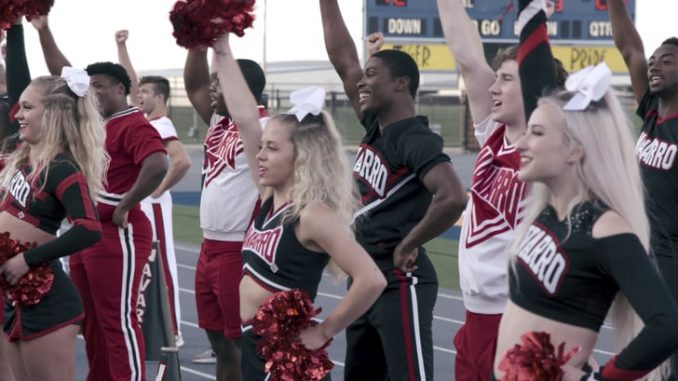
By now, every American with a Netflix account has seen “Cheer,” knows someone who has seen “Cheer,” or has been asked, “Have you seen ‘Cheer’?” We’re a nation divided on many things, but it looks like we may have found the one thing that has the potential to unite us all: a six-part docuseries about a competitive collegiate cheer team.
What I’m talking about is, of course, “Cheer,” Netflix’s latest offering that follows the Navarro College cheer team as they chase their fifteenth victory at the National Cheerleading Championship in Daytona, Florida. I understand… I wasn’t sold either.
But “Cheer” is more than just a reality show. If you’re in the market for low-stakes, maybe-scripted drama, look elsewhere — “Real Housewives” she is not! Because in “Cheer,” the stakes could not be higher. One episode in and you’ll feel like you are a Navarro Bulldog, wondering how in the hell you’re going to balance practice, class, with that event in town you have to cheer at and WHETHER OR NOT YOU’RE GONNA BE ON MAT FOR DAYTONA! (For those not well-versed in the world of cheerleading, which I obviously am, being “on mat” means to actually be a part of the routine for the performance).
At the center of it all is Monica Aldama, the head coach of Navarro Cheer. On the surface, Monica is terrifying. She’s intimidating, she exudes Cheer Coach energy and she’s always wearing some form of heel… always. As the show goes on, however, Monica’s heart is exposed. She pushes her team, but it’s only because she knows they have it in them. She’s upset when they falter, but only because she knows they can do better.
In a standout scene, Lexi (a cheerleader in her first season on the team) finds out that intimate photos of her were posted online without her consent. She’s afraid, angry and embarassed, and admits that she doesn’t know who to turn to. “I didn’t even tell my mom about it,” she says to the camera. At practice later in the episode, the situation is clearly weighing on Lexi, and Monica picks up on it right away. In the next episode, we see Monica bring Lexi to the police station to file a report.
It’s moments like these that elevate “Cheer” to a status higher than just a “reality show.” Many of the athletes featured in the show have fought hard to get where they are. Jerry, a breakout ray of light whose journey to mat every viewer will find themselves invested in, lost his mother at a young age. Morgan, his teammate, was abandoned by her parents when she was a child, and was forced to raise herself with her older brother for most of her adolescence.
Of course, “Cheer” isn’t just six hours of tear jerking moments. It’s also a show meant to expose the world to cheerleading as a sport. “The age old vision that people have of cheerleaders is on the sideline at the sport. They’re not the sport,” one subject says in the first episode. “But cheerleading has evolved tremendously since its inception.”
And evolved it has. In every episode, at least one cheerleader suffers an injury that would have any average person on bedrest for a week — in most cases, the Navarro cheerleaders are back at practice the next day. It’s a testament to the strength it takes to be a cheerleader, both physical and mental, and though I had no personal stake in the “is cheerleading a sport?” argument before, it is, post-“Cheer,” the hill I will die on.
